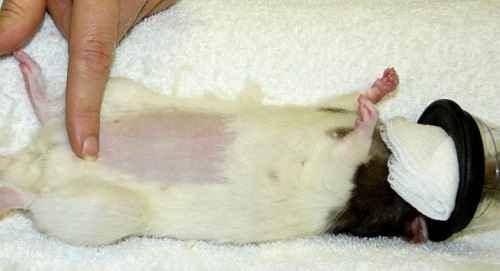Male rats need neutering more than female rats need spaying.
Getting your pet rats fixed (neuter or spayed) is more important for male rats and sometimes applicable to females. Around the age of 6 months, rats will go through puberty.
Your once sweet rats that got along great may become aggressive towards each other. Some rats have also been known to become more territorial towards their owners.
ALSO SEE: How Big do rats get?
Getting a Rat Neutered or Spayed
There’s been a couple rats in my experience where they would be fine outside of their cage but if I try to put my hand in their territory, they will snap at me and even come close to biting.
Preventing behavior changes in your rat
An easy way to prevent such a drastic change in your rats is to get them neutered or spayed before that age. The general recommended age is around 4 months so that the rats will be well sized and not so small.
You need to get the procedure done before 6 months hit so that they don’t experience a rush of hormones and go crazy. Of course, there’s always the chance that they will remain as they are and stay sweet and normal.
However, if you don’t want to risk behaviorial issues with your rat, talk to your veterinarian about getting them fixed.

Is it necessary to get a rat fixed?
Is it absolutely necessary? No. I have two boys at home that are not neutered. They’ve never tried to bite. They’re as sweet as they were when they were babies.
ALSO SEE: Can You Adopt a pet rat?
Neutering or spaying isn’t for everyone (or rat)
Don’t get me wrong, neutering can certainly help. Especially if you have to do with other behaviors such a urine marking. It can most definitely help. But with neutering comes stress for the rats. It’s not just simply “neutered and done.”
Your rats will have to go through a healing period and hormonal changes. Sometimes it’s hard to weigh the long term benefits vs. doing something that may be totally unnecessary.
Conclusion
My general tip is – don’t fix something that isn’t broken. If you find your rats hard to socialize, maybe even aggressive towards you or other rats, then you may want to consider it.
If suddenly they hit 6 months of age and they change their behaviors, talk to your vet and see what your options are.
There are other behavioral training alternatives that can be considered. Check out my section on pet rat training.




Leave a Reply
You must be logged in to post a comment.